Good morning!
Greetings in the name of the Father, the son, and the Holy Spirit.
On the evening of that day, the first day of the week, the doors being locked where the disciples were for fear of the Jews, Jesus came and stood among them and said to them, ‘Peace be with you. (John 20:19)
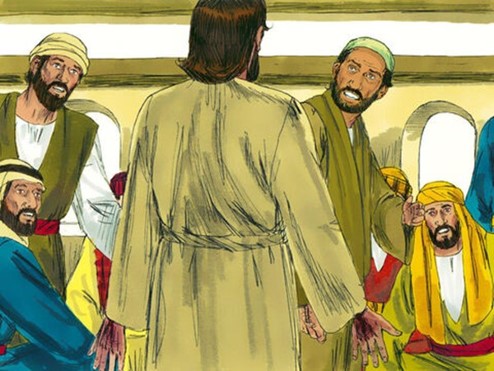
Imagine the intense mixture of fear and hope that filled a small, dimly lit room where Jesus’ disciples huddled together behind locked doors. These men were enveloped in a profound sense of uncertainty; their leader, whom they had followed with unwavering faith, had been crucified, leaving them directionless and deeply afraid of the repercussions they might face. The future was a murky void, filled with more questions than answers. How could they carry on the mission Jesus had entrusted to them? Would they too be hunted down? The weight of these worries pressed heavily upon every heart in that quiet, secluded space.
Into this thick atmosphere of trepidation and subdued whispers, Jesus appears—suddenly and miraculously. He stands among His disciples, not as a ghost or a vision, but in resurrected flesh and blood, bringing with Him an aura of peace that pierces the prevailing gloom. “Peace be with you,” He says (John 20:19), words that cut through the tension like a sharp blade through cloth. This profound moment, so vividly captured in John 20:19-29, does more than merely confirm the reality of His resurrection; it also addresses the deeply human experiences of doubt a—-nd belief that are common to us all.
This encounter between Jesus and His disciples is not just a pivotal event in the narrative of Christianity; it’s a mirror reflecting the universal struggle between fear and hope, skepticism and faith. As we delve into this passage, we explore how Jesus’ appearance not only solidifies the faith of His followers but also offers timeless insights into overcoming the doubts that so often besiege the human mind.
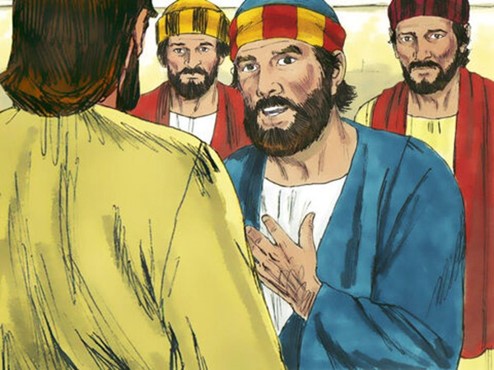
Peace Amidst Fear
The first appearance of Jesus to His disciples after His resurrection is a deeply significant event, charged with emotion and meaning. Marked by Jesus’ simple yet profoundly reassuring greeting, “Peace be with you,” this encounter occurs under circumstances filled with tension and fear (John 20:19). At the time, the disciples were besieged by uncertainty and dread, having secluded themselves behind locked doors for fear of the Jewish leaders. They were in a state of hiding, trying to protect themselves from the potential threat of arrest or worse, following the crucifixion of their leader.
Despite these fortified barriers, Jesus appears among them, unimpeded by physical constraints—an emblematic gesture showing that no barrier, physical or otherwise, can hinder His presence and peace. This miraculous entry underscores a pivotal theme in Christian faith: the transcendence and accessibility of Jesus’ comforting presence, even in the most dire circumstances.
When Jesus greets His disciples, His peace is not merely a form of calmness. It is an active, powerful force—a profound reassurance that cuts through both physical and emotional turmoil. To further affirm His real, physical resurrection and not just a spiritual or ghostly appearance, Jesus shows them His hands and side. This act is deeply symbolic, as it provides tangible proof of His crucifixion and subsequent resurrection. “Then the disciples were glad when they saw the Lord” (John 20:20). Here, scripture captures the transformation from fear to joy, illustrating the profound impact of witnessing the wounds that signified His sacrifice and victory over death.
This encounter with Jesus illustrates that faith in Christ enables us to find peace in the most turbulent times. His presence doesn’t just bring a passive peace; it actively transforms our inner landscapes from fear to faith, and from confusion to clarity. This transformation is pivotal, for it reassures the disciples—and us as readers—that we are not abandoned in our times of need but are continuously upheld by His comforting presence.
Furthermore, this narrative teaches us about the nature of Jesus’ peace. It is not an escape from reality, nor is it ignorance of the perils and pains of life. Instead, it is a robust peace that acknowledges and overcomes the world’s chaos. Jesus articulates this just after showing His wounds: “Peace be with you. As the Father has sent me, even so I am sending you” (John 20:21). This statement links the peace He offers to the mission He entrusts to His disciples. It’s a peace that empowers and commissions, not one that merely soothes or placates.
In this profound moment, we are reminded that true peace from Jesus prepares us to face the challenges of the world rather than retreat from them. It is a peace that equips us to carry on His work, to spread the good news, and to embody the love and sacrifice He demonstrated. The peace of Christ reassures us of His continual presence, enabling us to transform our fear into a faith that is active and engaged, moving us from a state of hiding and confusion to one of mission and clarity.
This narrative invites us to reflect on the transformative power of encountering Jesus. It encourages us to seek and embrace His peace, which pierces the darkness of our fears and shines a light on a path marked by hope and reassurance. Through this encounter, the disciples—and all who follow in their footsteps—are invited to move forward in faith, carrying the peace of Christ into every aspect of their lives, even the most challenging.
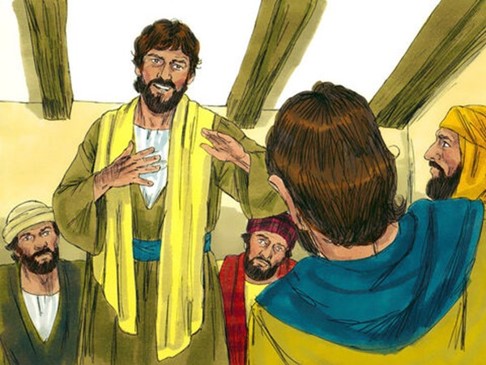
Faith Beyond Seeing
Thomas, one of the Twelve, was notably absent when Jesus first appeared to the other disciples after His resurrection. His absence led to a moment of profound skepticism that would define an aspect of faith for generations to come. Upon hearing of Jesus’ visit, Thomas expressed a hard-set incredulity: “Unless I see in his hands the mark of the nails, and place my finger into the mark of the nails, and place my hand into his side, I will never believe” (John 20:25). His demand for tangible proof speaks to a deeply human aspect of belief—the desire for empirical evidence, for something that can be seen and touched.
A week later, Jesus appears again, specifically to address the doubts harbored by Thomas. In this dramatic scene, Jesus directly engages with Thomas’ skepticism. Instead of chastising him for his doubt, Jesus invites Thomas to fulfill his own conditions for belief: “Put your finger here; see my hands. Reach out your hand and put it into my side. Stop doubting and believe” (John 20:27). This moment is pivotal, not only for Thomas but for all who would ever wrestle with doubt.
Jesus’ response to Thomas is emblematic of His approach to our frailties and doubts. He does not dismiss our need for evidence nor does He rebuke our questioning minds. Instead, He meets us exactly where we are, offering the proof we need in order to step over our doubts into faith. This interaction underscores a critical dimension of divine compassion—it recognizes our struggles with belief and patiently works within our limitations.
Thomas’ reaction upon touching Jesus’ wounds is a profound declaration of faith: “My Lord and my God!” (John 20:28). This exclamation marks a transformation from skepticism to a deep, personal recognition of Jesus’ identity and divinity. It reflects the powerful impact of having our doubts directly addressed by Christ’s presence and reassurance.
The narrative of Thomas is a powerful reminder that our faith is not weakened by our questions. In fact, authentic faith often passes through the crucible of doubt. Jesus’ encouragement to believe, even in the face of uncertainty, is a call to a faith that is not blind but sees through the lens of personal experience and encounter. He does not call us to a faith that ignores our intellect and senses but rather one that fully engages all aspects of our being.
This story also teaches that Jesus welcomes our seeking spirit. The invitation to explore and verify the claims of faith is inherent in the Christian tradition. Far from being a sign of weak faith, a questioning mind demonstrates an engagement with the profound truths of Christianity. Jesus meets each person’s specific needs for belief, whether they need to see, touch, or hear to overcome their doubts.
Moreover, this encounter between Jesus and Thomas highlights an important aspect of Christian community: the need for patience and understanding with each other’s spiritual journeys. Just as Jesus patiently addresses Thomas’ doubts, so too are we called to bear with one another in love, fostering a community where questions can be raised and explored without fear of judgment.
In conclusion, the story of Doubting Thomas is not just about skepticism but about the journey towards a deeper, more resilient faith. It is about the acknowledgment and acceptance of doubt as a part of the faith experience—a part that Jesus Himself is ready to meet with open, pierced hands. This encourages all believers to embrace their journey of faith with honesty, openness, and the assurance that Jesus will meet them at every point of need and doubt.
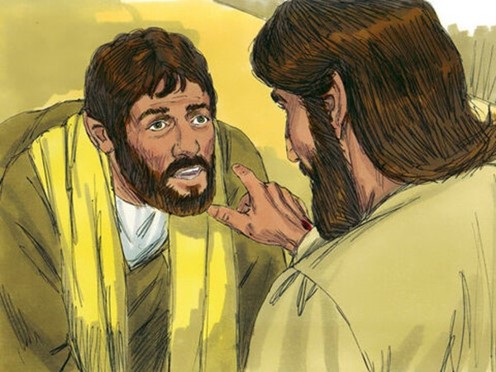
Blessed are Those Who Believe without Seeing
After Thomas makes his profound declaration of belief by exclaiming, “My Lord and my God!” (John 20:28), Jesus acknowledges his faith but then extends the conversation to encompass a broader, more encompassing principle of belief. Jesus responds, “Because you have seen me, you have believed; blessed are those who have not seen and yet have believed” (John 20:29). This statement introduces a new dimension to the understanding of faith within the biblical narrative, presenting a sort of beatitude for future generations of believers.
This remark by Jesus underscores the blessedness of those who believe without the necessity of physical proof. This concept challenges the very human inclination towards empirical evidence and sensory validation, advocating instead for a faith that transcends visible confirmation. It’s a call to embrace a belief in the divine that goes beyond what can be physically experienced—an encouragement to trust in the reality of God’s presence and action even in the absence of tangible signs.
This type of faith, which Jesus praises, is not a passive or unreasoned trust but a dynamic, active belief that engages the believer in a deeper, more substantial relationship with the divine. It suggests that the essence of faith lies in the conviction of truths unseen, as echoed in Hebrews 11:1, “Now faith is the assurance of things hoped for, the conviction of things not seen.” This passage from Hebrews encapsulates the type of faith that Jesus describes—a faith that does not rely on visual evidence but is rooted in the assurance and conviction of God’s word and His promises.
This call to believe without seeing is crucial because it opens the door to a spiritual understanding that transcends time and space, connecting believers across different eras to the foundational truths of Christianity. It is a faith that has resonated through the ages, from the early church to contemporary believers. This kind of faith is vital for spiritual growth and maturity; it represents a deep trust in Jesus and His word, forming the bedrock of a transformative relationship with Him. It requires a surrender of the need for constant proof in favor of a steadfast confidence in His promises.
Furthermore, this aspect of faith is particularly relevant in today’s world, where empirical evidence and sensory data often dominate our understanding of reality. Jesus’ statement invites believers to a higher plane of trust and assurance, where the spiritual and eternal are given precedence over the temporal and seen. It challenges believers to cultivate a faith that can withstand doubts and uncertainties without the constant reinforcement of physical signs.
In encouraging this profound trust, Jesus not only affirms those who have not seen yet have believed, but He also sets a standard for the depth and quality of faith that believers are called to aspire to. This faith is not blind; it is an informed trust that chooses to believe based on the reliability of Jesus’ teachings and the myriad ways God has proven faithful throughout history.
Ultimately, this beatitude highlights a blessed state of being for those who embrace this profound trust in the unseen. It promises a unique spiritual insight and a deeper communion with the divine, available to all who choose to believe beyond what is immediately apparent. This foundational principle remains a cornerstone of Christian faith, encouraging believers to trust wholeheartedly in the unseen hand of God guiding their lives.
Summary: Faith and Doubt Interwoven
The story of Jesus appearing to His disciples, culminating with Thomas’ confession of faith, profoundly illustrates that faith and doubt are intricately linked, rather than polar opposites. This narrative from John 20:19-29 provides a deep exploration into the human condition, revealing that doubt can often be a step along the path to a deeper, more resilient faith. In these passages, we witness the mercy and understanding of Jesus as He addresses the skepticism of Thomas—not with reprimand but with patience and tangible proof of His resurrection.
This engagement between Jesus and Thomas teaches us a crucial lesson: Jesus welcomes our inquiries and embraces our need for understanding. He does not turn away from those who question but rather draws nearer, providing the evidence and reassurance needed to bolster faith. This approach by Jesus underscores the idea that having doubts does not disqualify us from divine love or from a fulfilling spiritual life; instead, it is a part of the journey to maturing in our faith.
Moreover, the narrative pushes us to recognize that faith enriched by personal experience and evidence can be more enduring and impactful. Jesus’ statement to Thomas, “Because you have seen me, you have believed; blessed are those who have not seen and yet have believed” (John 20:29), expands this personal lesson into a universal principle. It praises the faith of those who believe without physical proof, highlighting a spiritual insight that transcends sensory experience. This beatitude serves as a call to believers everywhere to develop a faith that rests not on visible signs but on the truth of Jesus’ words and the reliability of His promises.
Thus, the story is not just about the transformation of one doubter but an invitation to all to journey through and beyond doubt. It encourages us to seek Jesus in the midst of our uncertainties and to embrace a form of faith that does not solely depend on what is seen or empirically verified. This type of faith is more than belief; it is an active trust in the character and reality of God, nurtured by both our experiences and the testimony of others.
In sum, the narrative of Jesus and Thomas enriches our understanding of faith as a dynamic interplay between seeing and believing, doubting and trusting. It calls us to a deeper contemplation of how faith, often perceived as a straightforward acceptance, is in reality a complex and layered experience, where seeing might lead to believing, but true belief often leads us into a deeper unseen reality. This story, therefore, not only reassures those who struggle with doubts but also challenges every believer to cultivate a faith that endures beyond the tangible and the temporal.
Let us pray.
Heavenly Father, thank You for showing us through Your Son that our doubts do not disqualify us from Your presence. Help us to find peace in the assurance of Christ’s resurrection, just as the disciples found comfort when Jesus came to them. Teach us to trust in Your promises, even when they are beyond our sight and understanding. Strengthen our faith, that we may believe with a conviction that does not need to see to affirm. And like Thomas, may we have the courage to declare, “My Lord and my God!” in every circumstance of our lives. Guide us in our journey of faith, peppered with doubts, but anchored in Your eternal truth.
Amen.
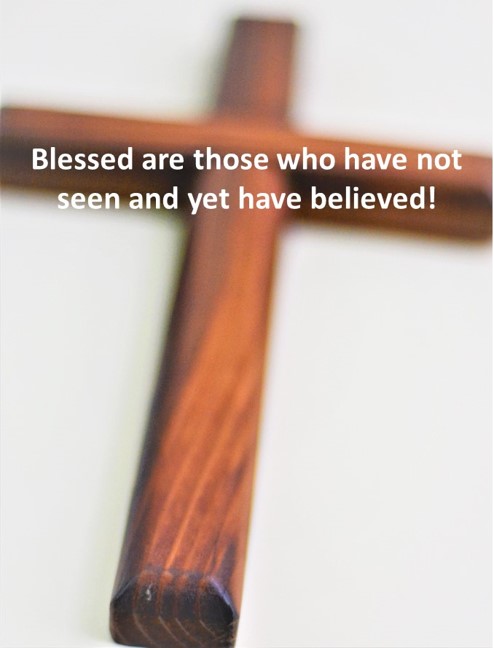
Jesus said to him, ‘Have you believed because you have seen me? Blessed are those who have not seen and yet have believed.’ (John 20:29)
